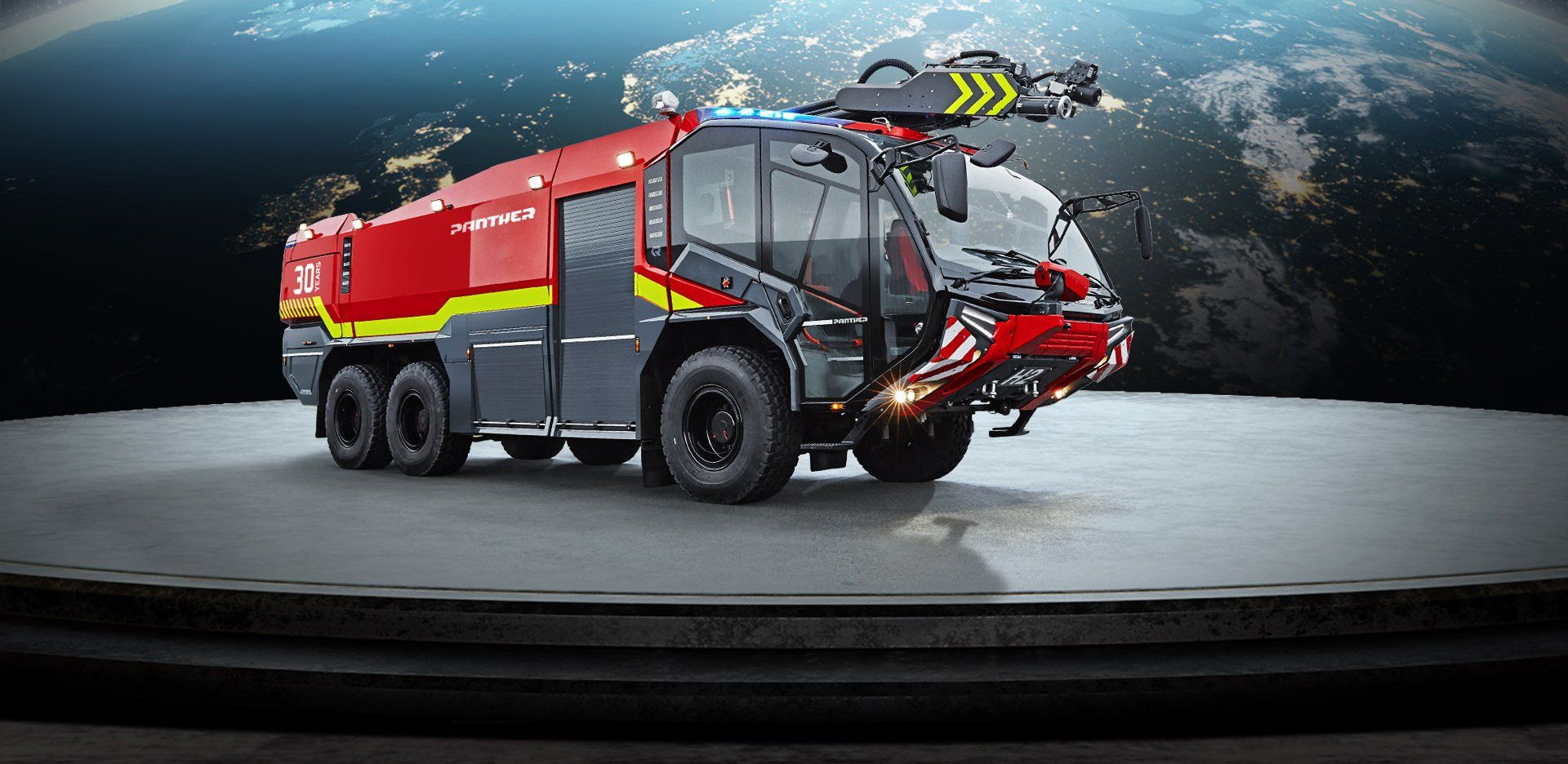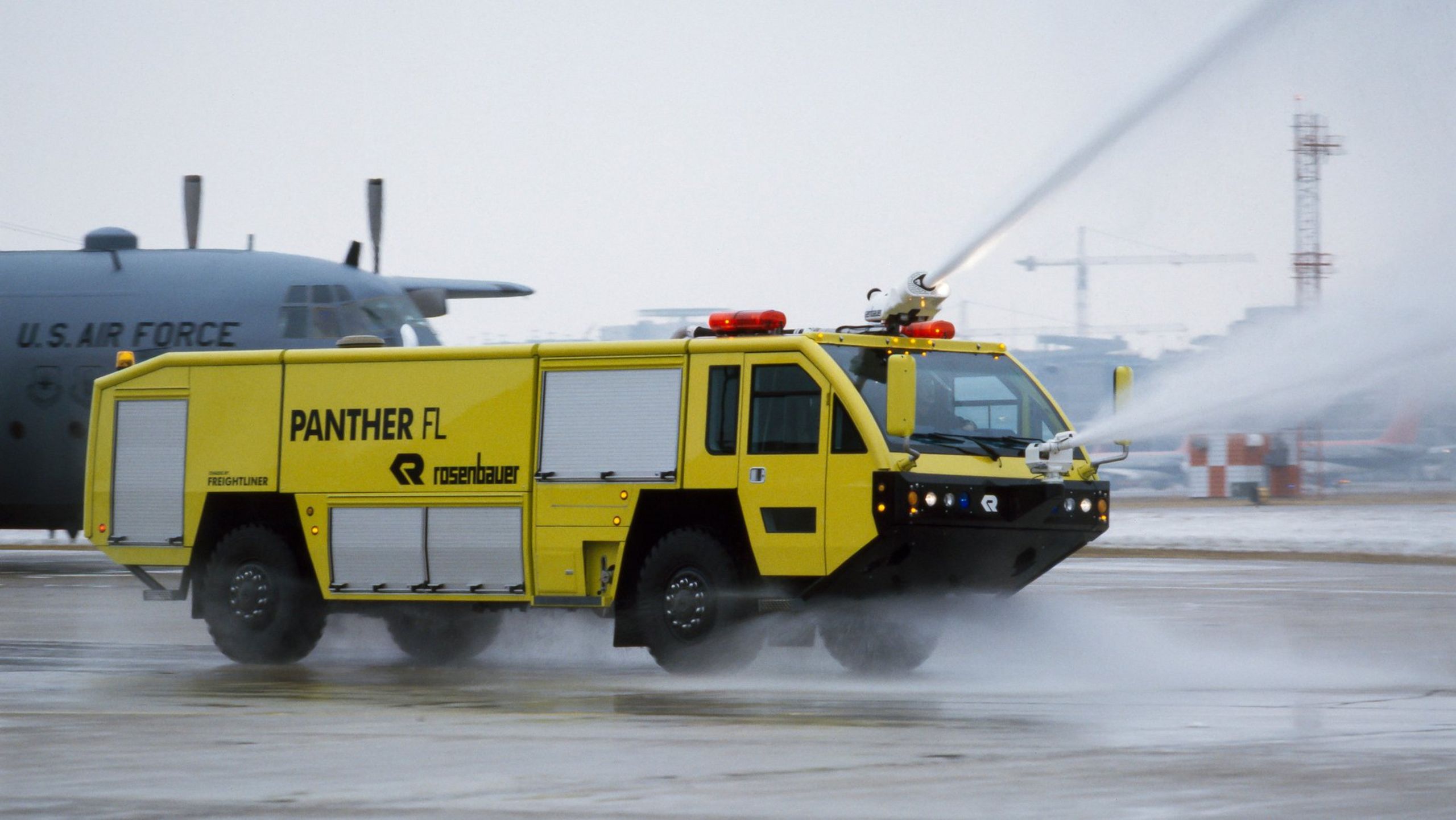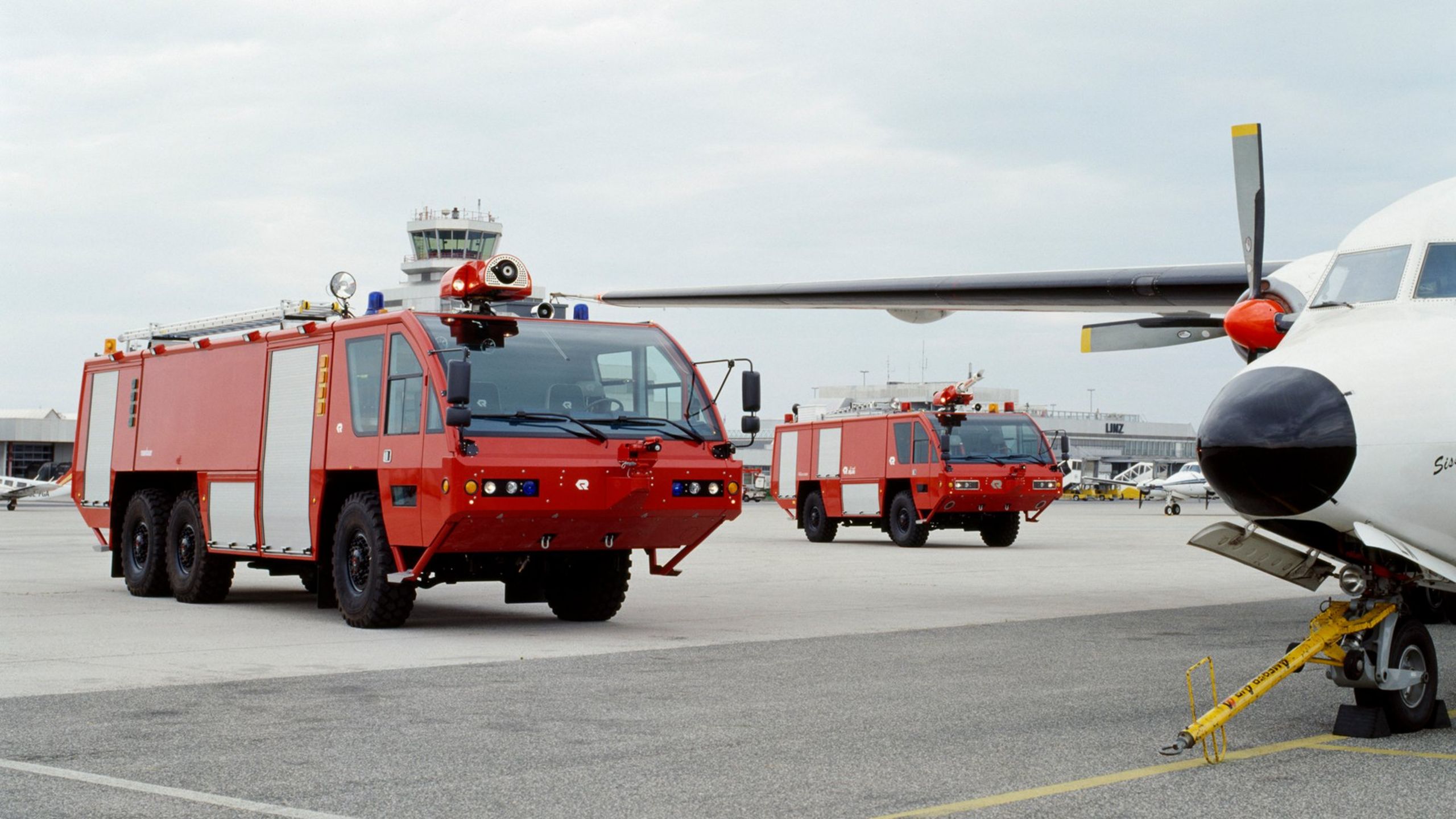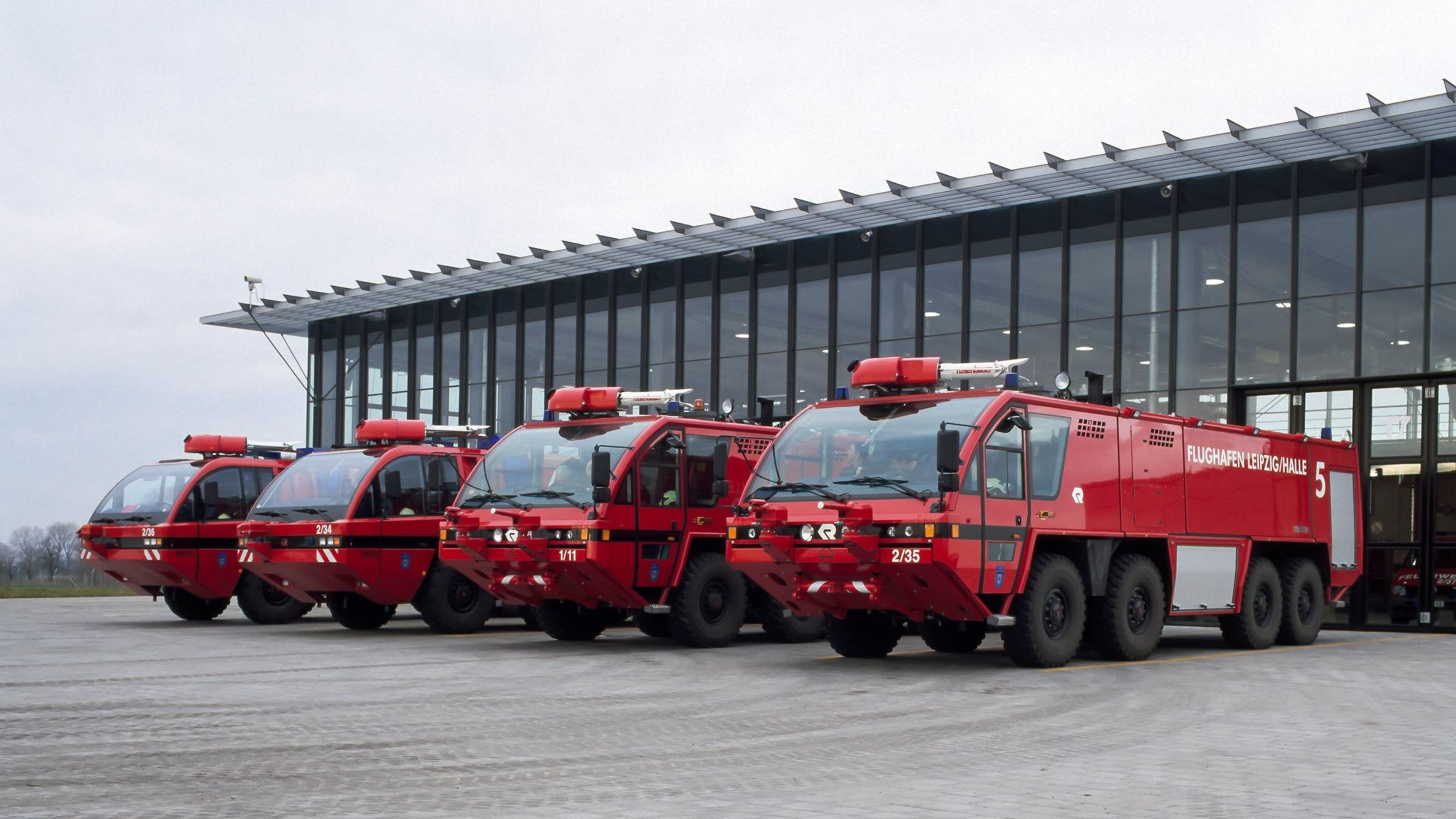If you do the body, we do the chassis.
The CEOs of Rosenbauer and Freightliner sealed the launch of the PANTHER in the USA with a handshake.
The starting shot was fired in January 1997, when a meeting was held at Rosenbauer Minnesota in Wyoming, MN, to explore the possibilities of setting up the company's own PANTHER production in the USA. Jim Hebe, President and CEO of the American truck manufacturer Freightliner, was also at the table. He wanted to expand the heavy off-road chassis area at his company and now turned directly to then Rosenbauer CEO, who was sitting opposite him at the table: "Julian, if Rosenbauer makes the body, we'll supply the chassis." Julian Wagner replied, "Okay, if Freightliner provides a suitable chassis, we'll build the vehicle." The "deal" was sealed with a handshake. Together they got to work.
Custom instead of commercial chassis
The chassis plays a crucial role in aircraft rescue and fire fighting (ARFF) vehicles, because they are basically heavy trucks that need to have the performance of race cars. In order for Freightliner's development engineers to get an idea of what is expected of a PANTHER chassis, Rosenbauer invited them to Austria for test and demonstration runs. It quickly became clear to the US technicians that the required performance could not be achieved with current and conventional truck technology. It needed a custom chassis (special chassis) that had to be much tougher and which was in a completely different performance range.
So, special axles from off-road heavy-duty trucks were used for the chassis of the second PANTHER generation and these were installed for the first time in an ARFF vehicle with a closed and welded box frame with coil springs, as is still standard today. Also realized for the first time together with Freightliner is the use of a power divider - also a technology that is still in use today. Whereas Rosenbauer ARFF vehicles were previously mainly equipped with two engines, a traction drive and a separate pump drive, the PANTHER now manages with just one engine. Its power is split via a special coupling system and the wheels and pump can be driven simultaneously.
Aluminum instead of GRP
One year after the starting signal, the rolling chassis of the first American-made PANTHER was ready. Rosenbauer used one of the most powerful pump units produced in Leonding (R600 with FOAMATIC premix system) and married the chassis with a newly developed superstructure. In contrast to the PANTHER 8x8 introduced in 1991, which had a glass-fiber reinforced plastic (GRP) superstructure, this consisted of a self-supporting aluminum construction that is bolted and glued together. Although this gave the PANTHER a very straight silhouette, aluminum is easier to procure than GFRP and can also be processed better and more cost-effectively.
A vehicle for the world market
The second PANTHER generation was initially designed with 4x4 and 6x6 axles. This is due to the requirements of the Federal Aviation Administration (FAA), which does not specify vehicles with 8x8 drive in its standards. American airport operators rely almost exclusively on these two axle types, because they only receive public subsidies for vehicles procured in compliance with the standards. Even at mega-airports like Atlanta International or Los Angeles International Airport, only PANTHER 6x6s are in service.
However, Rosenbauer also had the world market in its sights from the outset when developing the two new variants, because the increase in international air traffic required more and more airports to be equipped with modern emergency vehicles, and the PANTHER 6x6 is just the right size for the vast majority of them.
No. 1 still in operation
In 2000, the first American-built Rosenbauer PANTHER 6x6s were put into service at Tucson and Portland airports, and three vehicles were also delivered to Barbados in the same year. The first five PANTHER 4x4s go to the Air National Guard shortly afterwards. In total, around 550 PANTHERS have been produced and delivered in America over the last 20 years. That was about a quarter of Rosenbauer's total PANTHER production.
Incidentally, the prototype of the PANTHER FL 6x6 (FL for Freightliner), with which all test and trial runs were carried out at the Nevada Automotive Test Center in 1998, is still in operation. It is maintained and leased by Rosenbauer Minnesota when airport operators or mining companies have a short-term need for a powerful fire-fighting vehicle. "It doesn't look pretty, but it is still performing well," says Herbert Poellinger (now Area Manager APAC), who was instrumental in the development of the second PANTHER generation and, as Technical Manager, was responsible for building the prototype in Wyoming.

Register now for the Rosenbauer Newsletter & always be well informed!
Contact
Rosenbauer International AG
Paschinger Str. 90
4060 Leonding, Austria
office@rosenbauer.com


